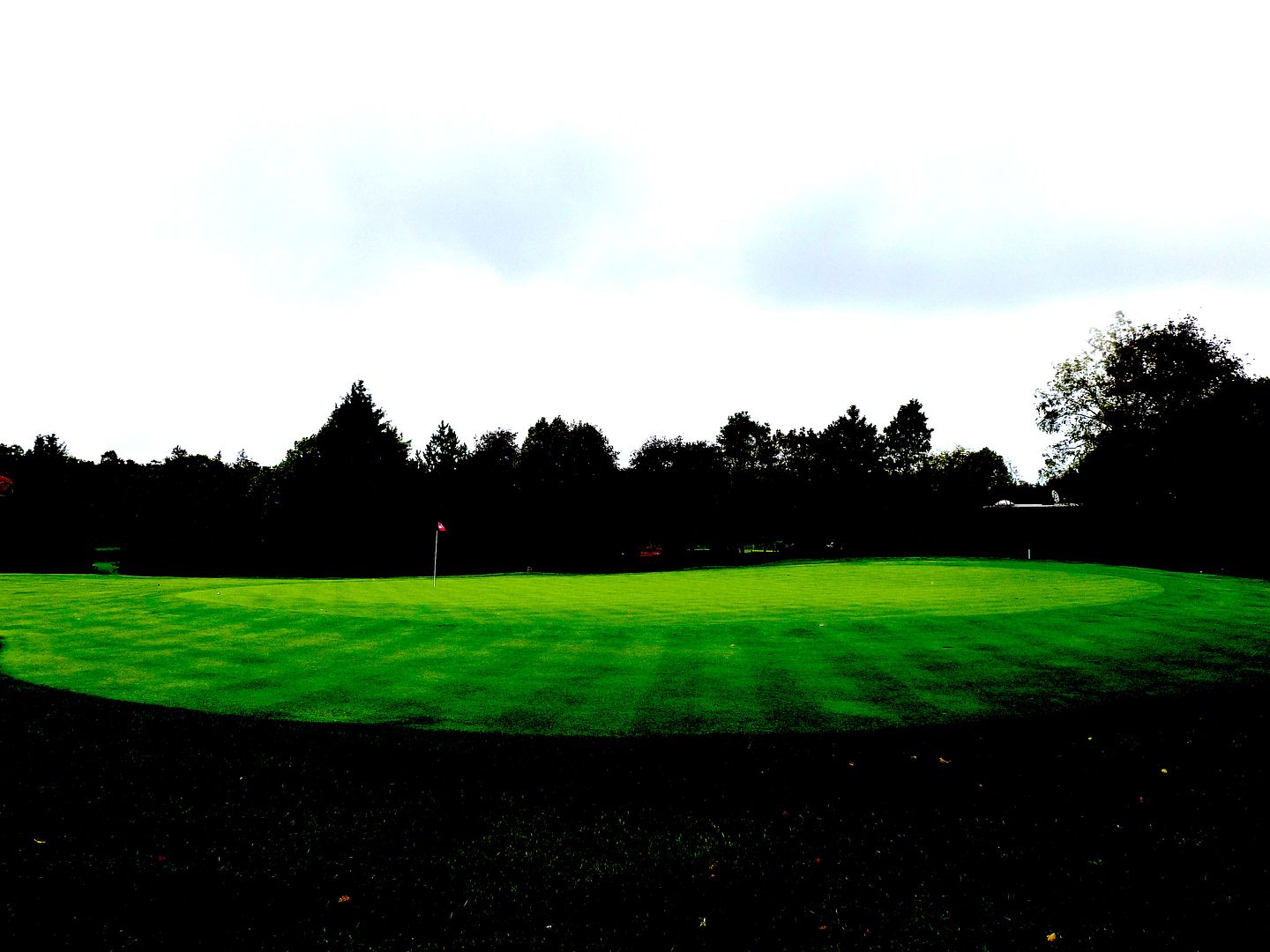 Course History
Course History [http://www.orchardlakecountryclub.com/Default.aspx?p=DynamicModule&pageid=221015&ssid=66856&vnf=1]
Building a first class golf course was one of the earliest and most important projects undertaken at Orchard Lake. Construction of the golf course began in the spring of 1926, under the direction of Captain C.H. Alison, of the British firm of Colt and Alison, an internationally known firm of golf course architects. To help cover the cost, the land was mortgaged, which raised $85,000 of the $136,000 total that it took to complete the project. William Conellan, consulting greens keeper of the Detroit District Golf Association carried out the work. Captain Alison said the course was built for the average player but it could be transformed, within two or three months, into a professional championship course. The course opened for play on August 3, 1927.
Routing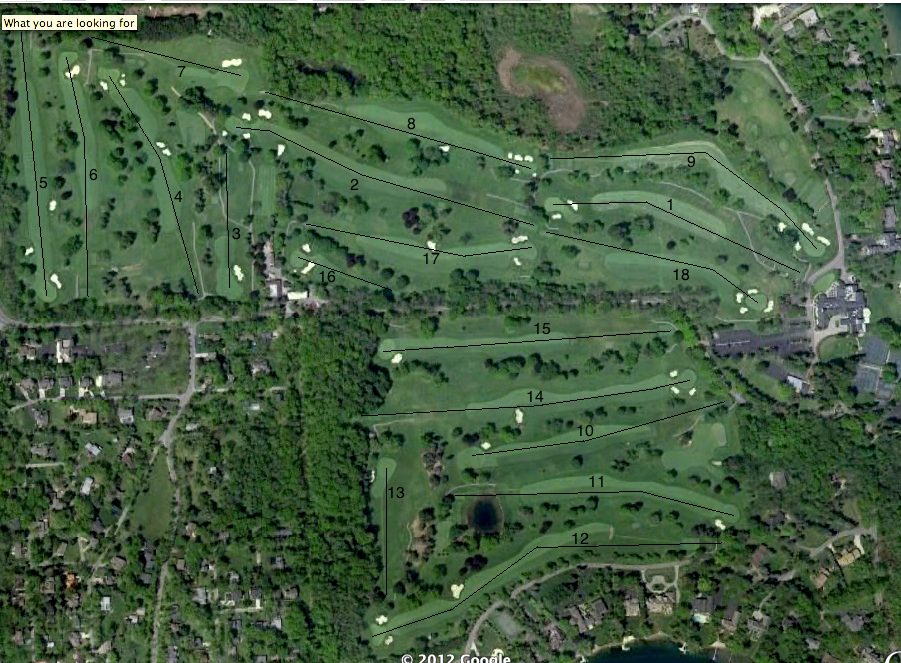 Scorecard
Scorecard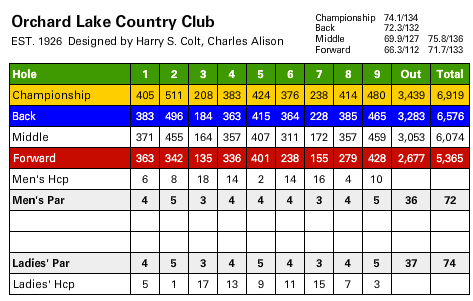
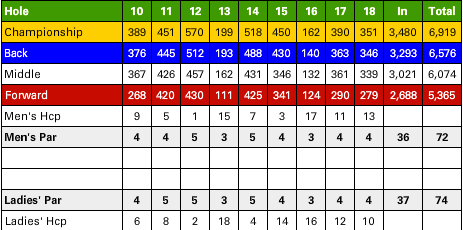 Hole 1: Par 4, 405 Yards
Hole 1: Par 4, 405 YardsSo much for a gentle handshake, the 1st at Orchard Lake is among the most difficult. There is plenty of width on the first hole, but like most of the golf course, deep rough and a line of trees will catch wayward tee balls.
Though much of the first hole is over flat terrain, the significantly elevated first green and the hills on which the trees on the left are perched give the golfer a clue that more interesting land may lay ahead (and it does!).
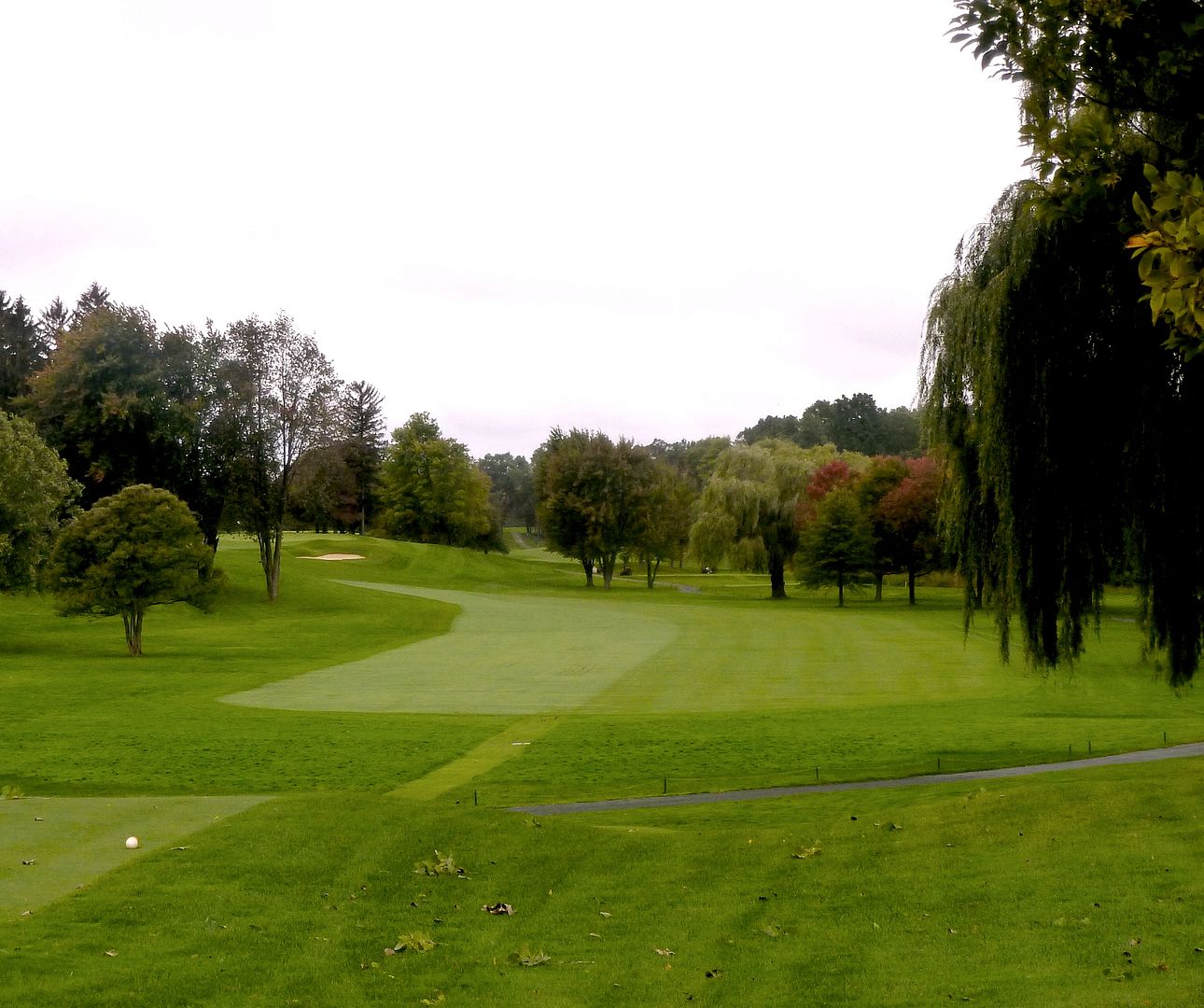

The approach gives the appearance of a fortress green, with no room to miss anywhere. Well, that's not quite true, you can't miss left, long, or right, but you can miss short-left.
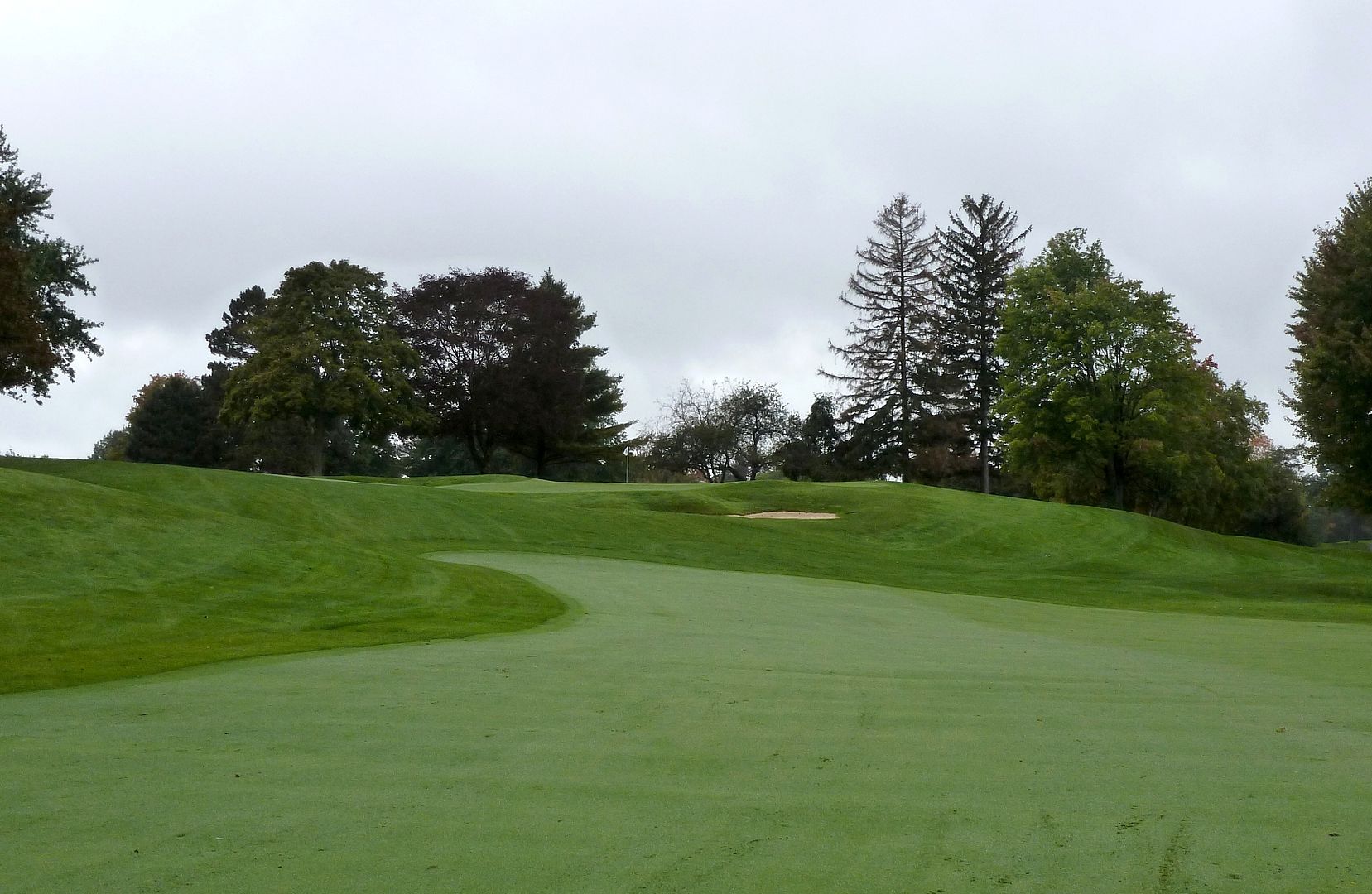
There is very significant tilt on the first green from back-to-front making any pin-high or long misses very difficult. The bunker short of the green, which appeared as though it was the worst spot to miss the approach, is likely the best spot to miss.
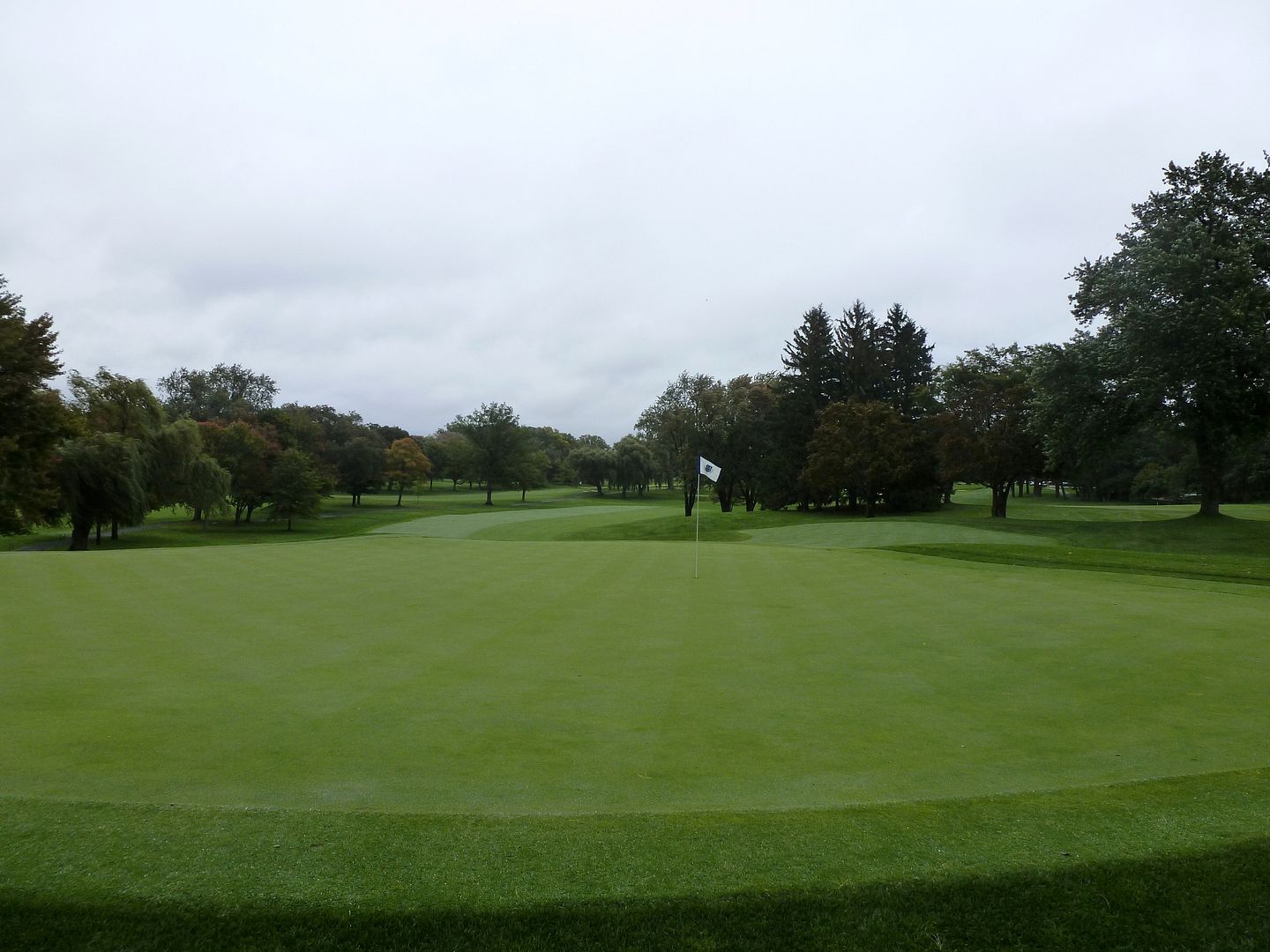 Hole 2: Par 5, 511 Yards
Hole 2: Par 5, 511 YardsThe 2nd is a very strong hole and easily the best par-5 on the golf course. A ridge peaks 100 yards from the tee, blocking the golfer's view of the fairway. Only the green in the distance and the grouping of trees to the right give an indication that a tee shot up the right is ideal. It is impossible to know where the left boundary of the fairway is located.
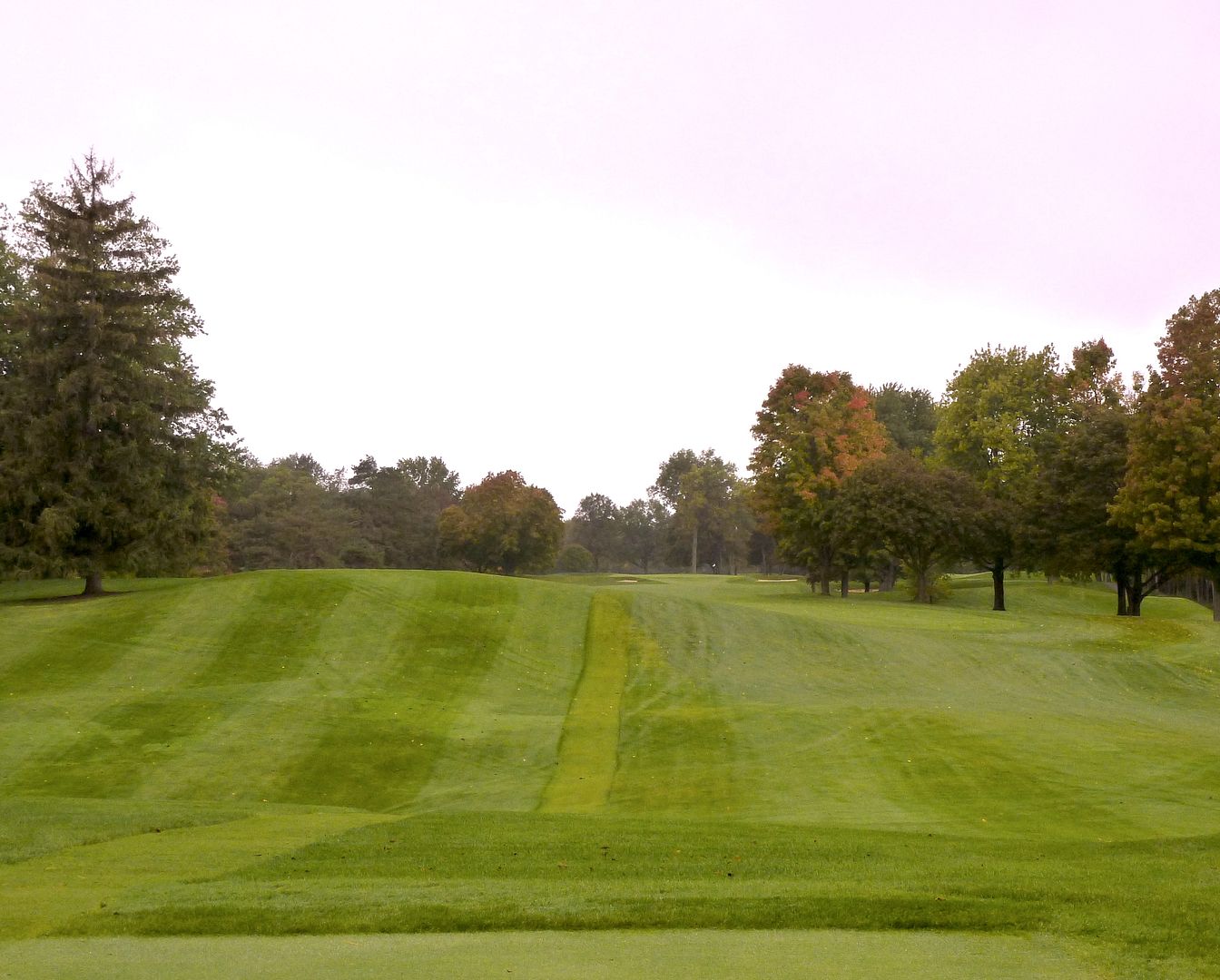
Upon cresting the hill, the golfer is presented with a fairway that slopes significantly to the left. Golfers that did not follow the visual clues and play down the right side of the fairway will find themselves in deep rough down the left. The second shot decision is dictated by a single fairway that narrows the fairway by half 100 yards short of the green.
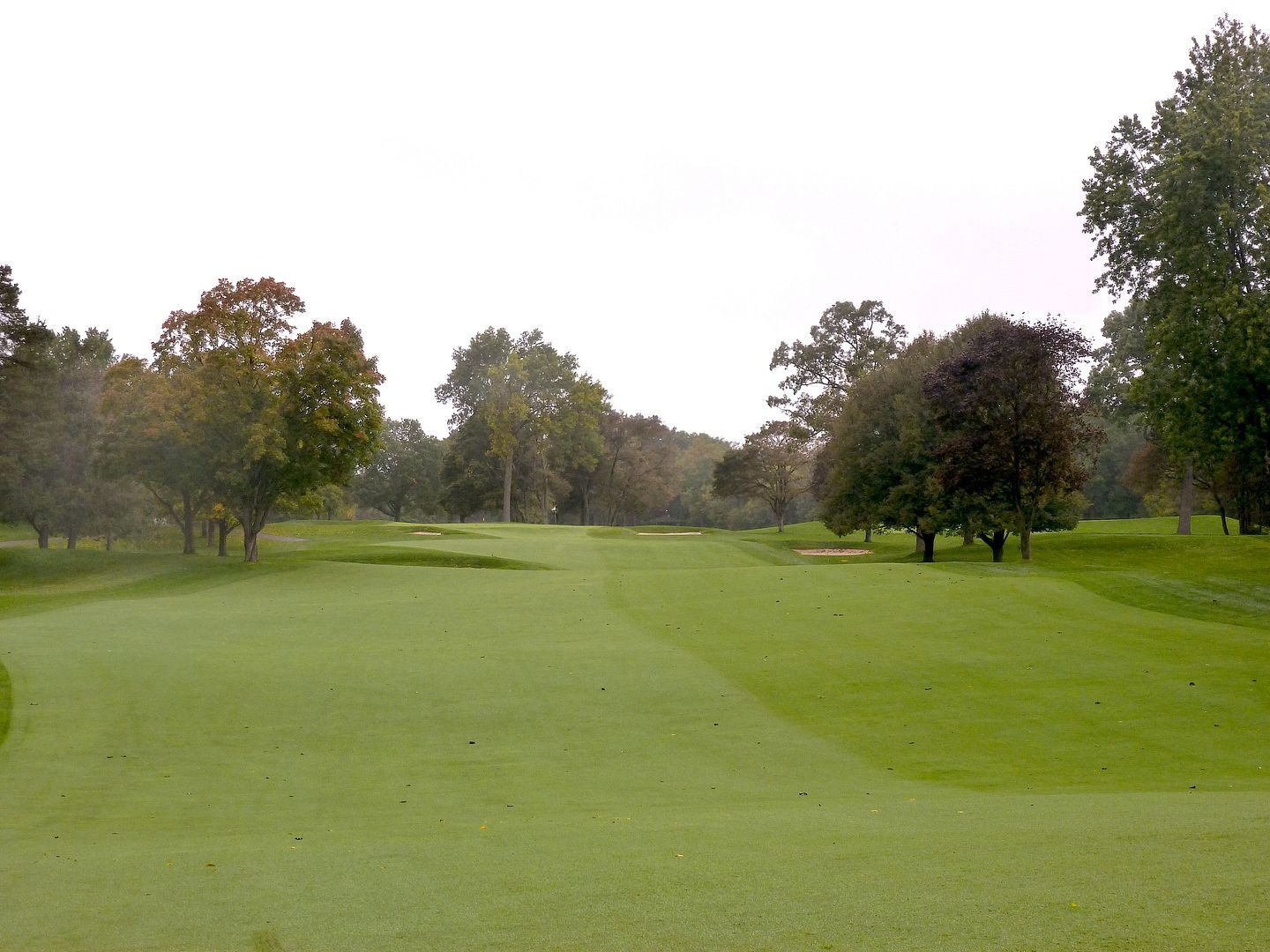
Laying-up short of the bunker leaves the golfer with a slightly uphill approach to a green that is partially visible. Judging pin location is nearly impossible.
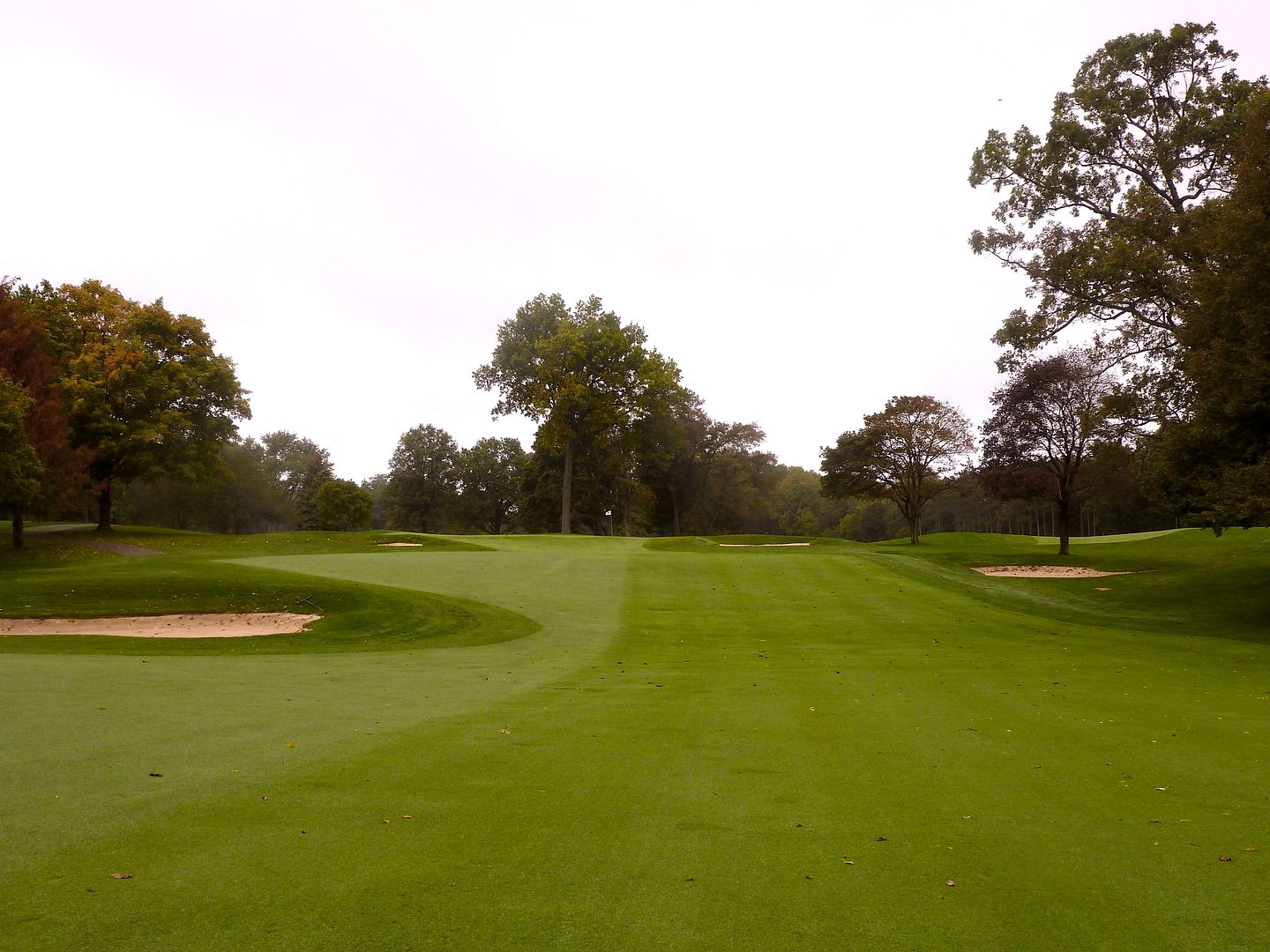
Approaching the green from passed the fairway bunker is even more intimidating. The entirety of the green's surface is now hidden and all one can see is the outline of menacing bunkers and a scary false-front.
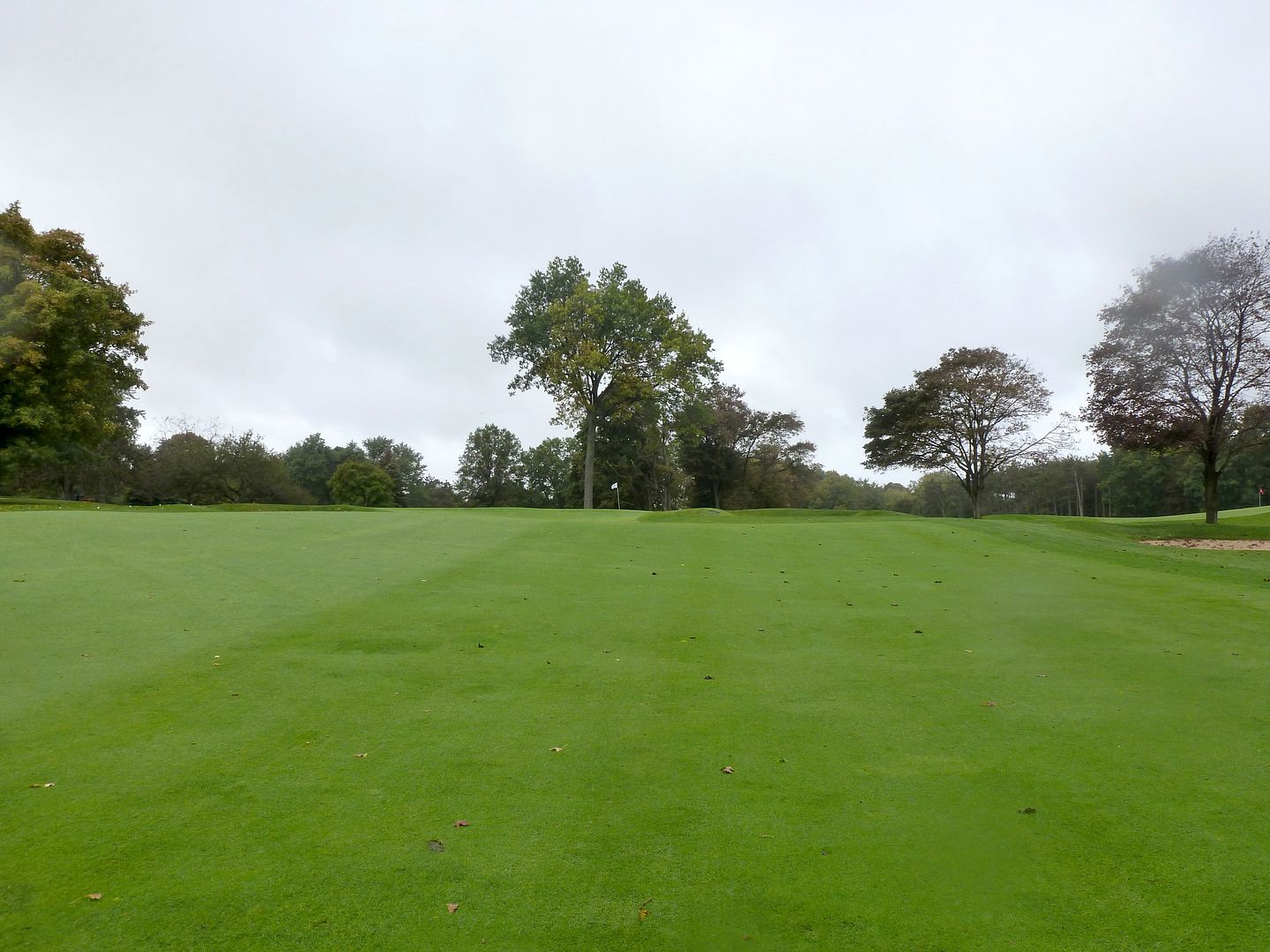
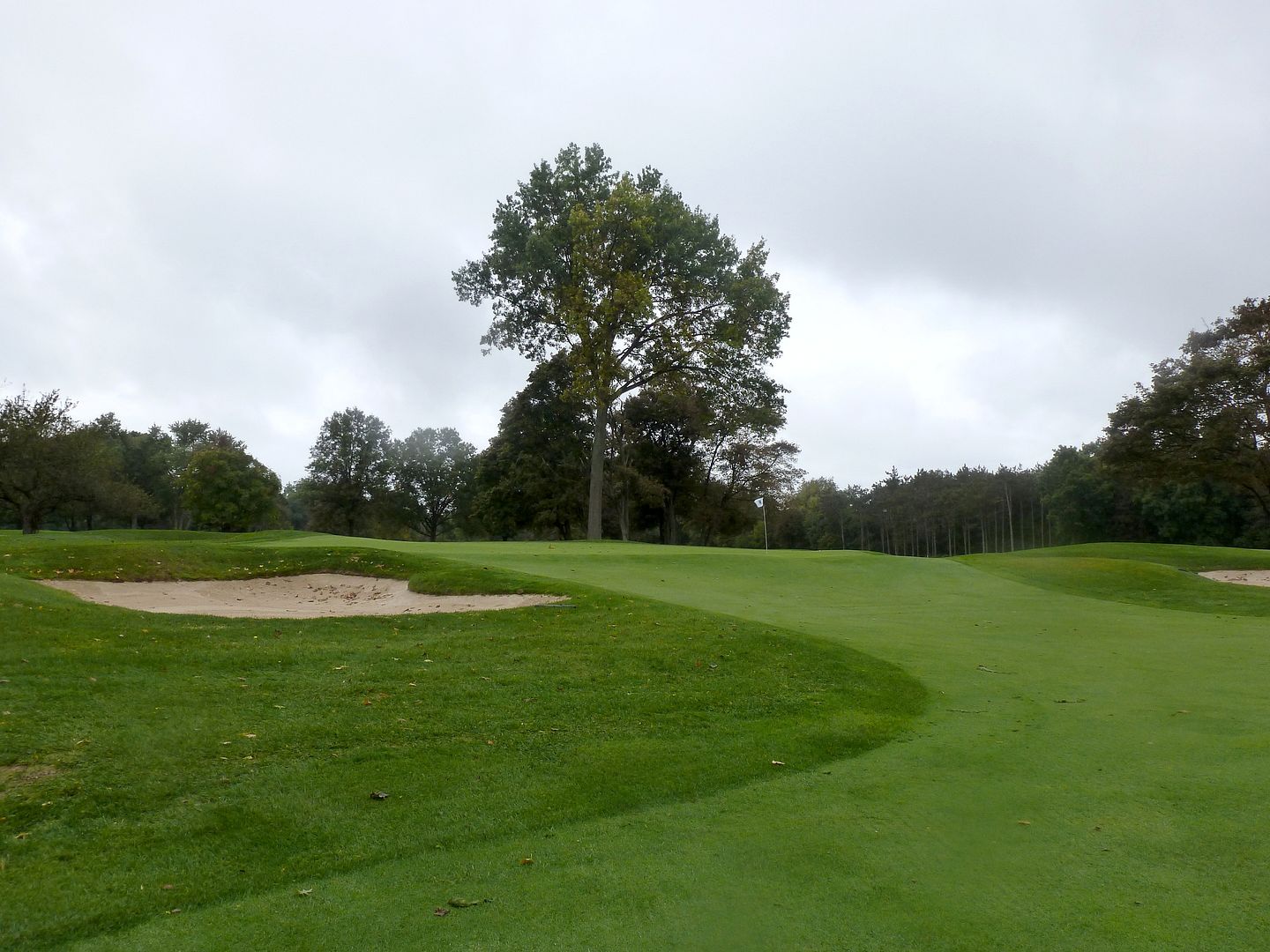
Upon reaching the green surface I was surprised by both its significant size and the amount of undulation. This picture taken from the right of the green shows the rolling nature of the 2nd green.
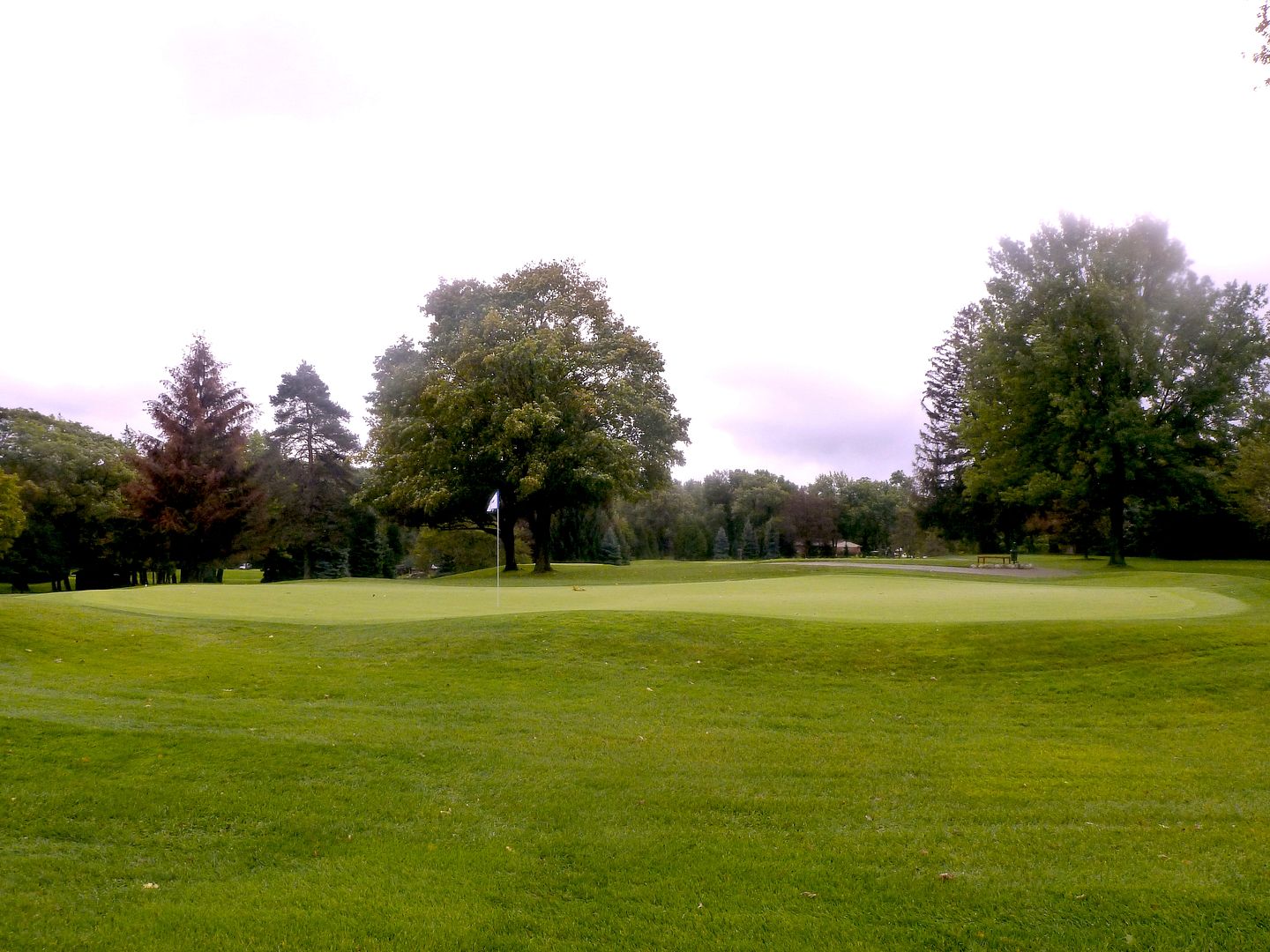
This picture from behind does not show the green undulation well, though it does show the fairway movement quite well.
 Hole 3: Par 3, 208 Yards
Hole 3: Par 3, 208 YardsThe third is a very difficult par-3, especially if playing into the wind. The fairway short of the green has a very interesting hog's back feature. Balls that land short of the green and are even slightly off the centreline will carom significantly either left or right, leaving a difficult uphill and blind pitch to the green.
The bunkering on the third did not appeal to me. The scale of the bunker seemed off -- too small -- at least as it looked from the tee (but what do I know!).
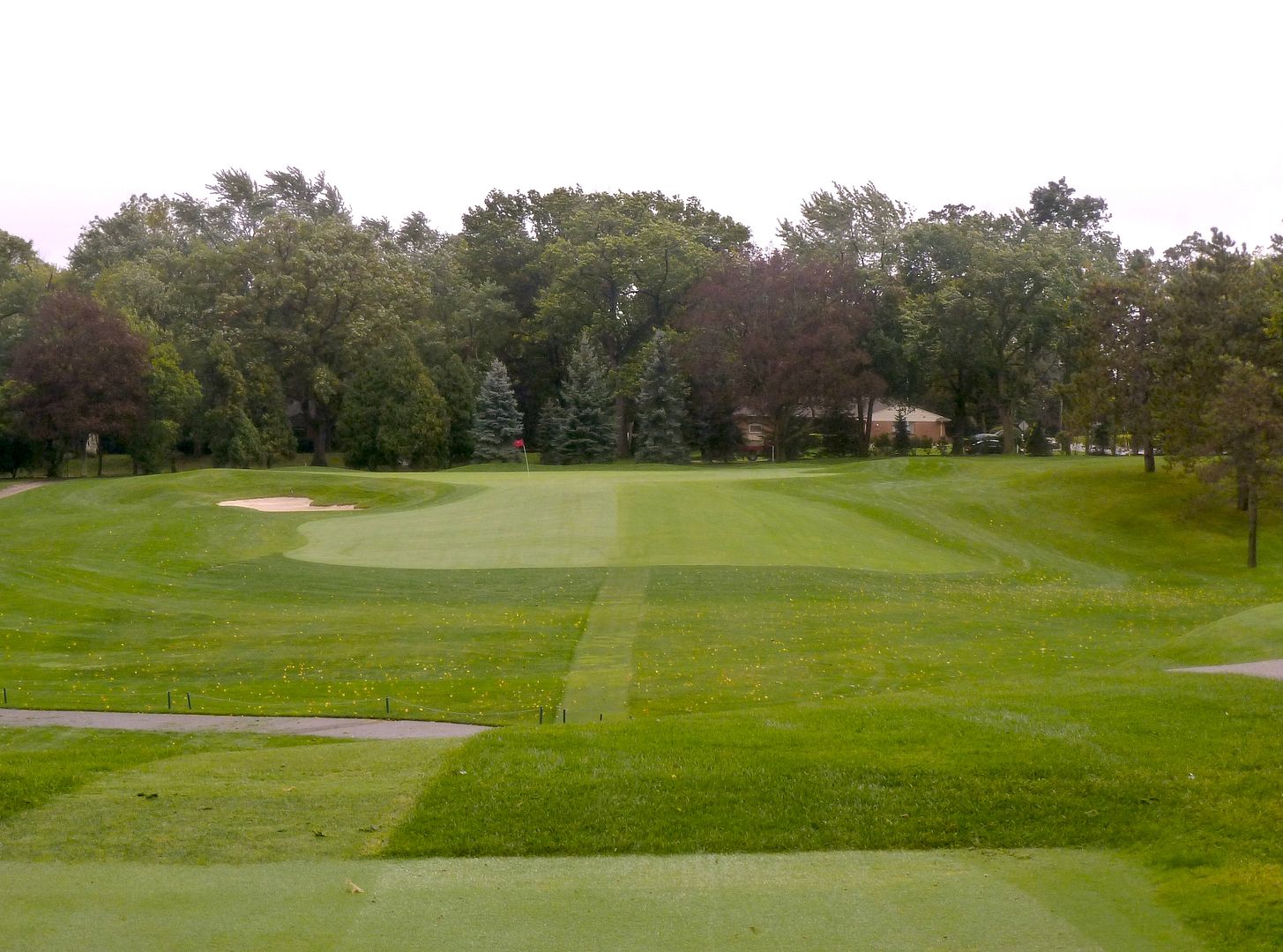
The left side of the hog's back and green side bunker
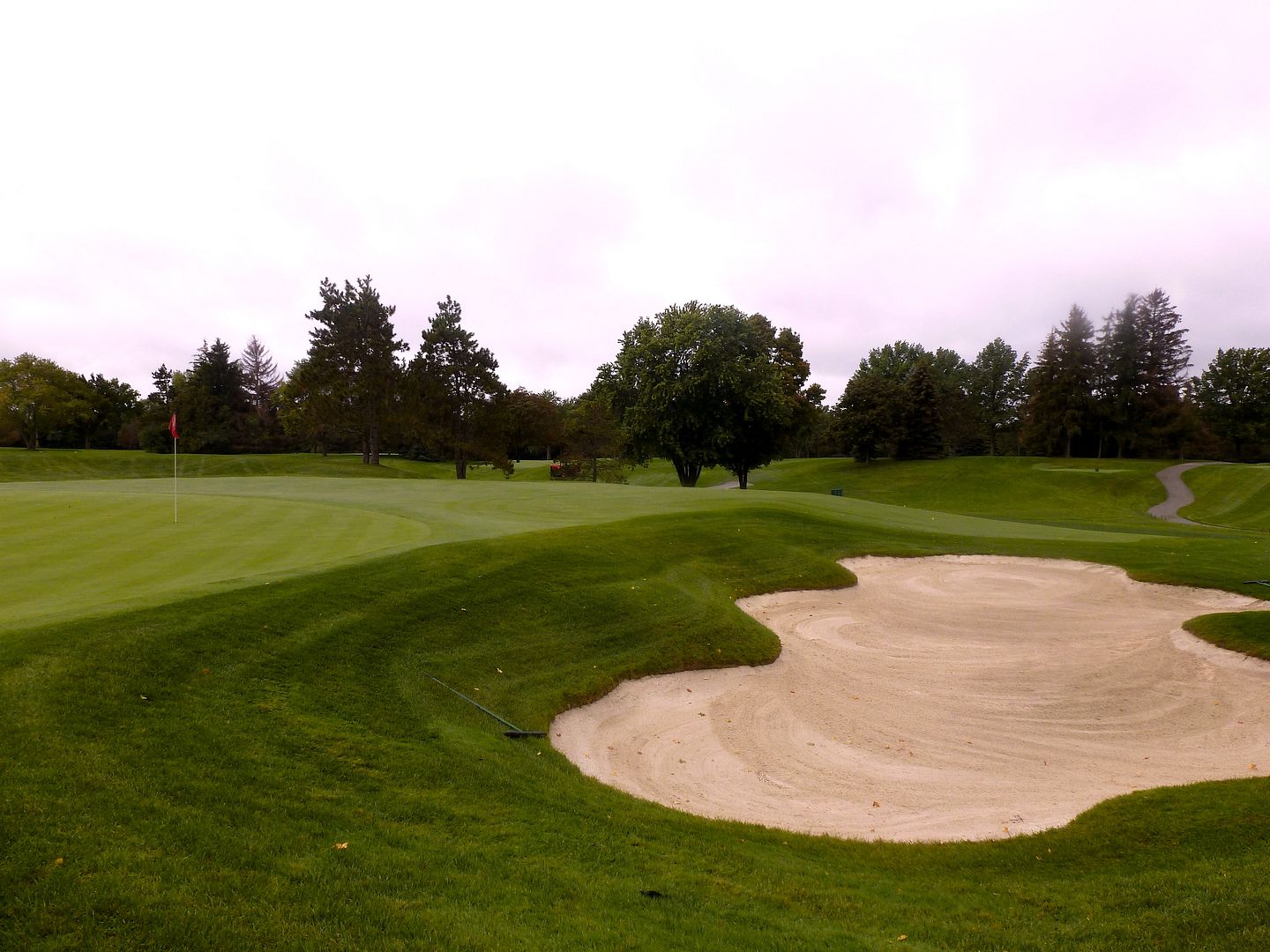
The right side of the hog's back
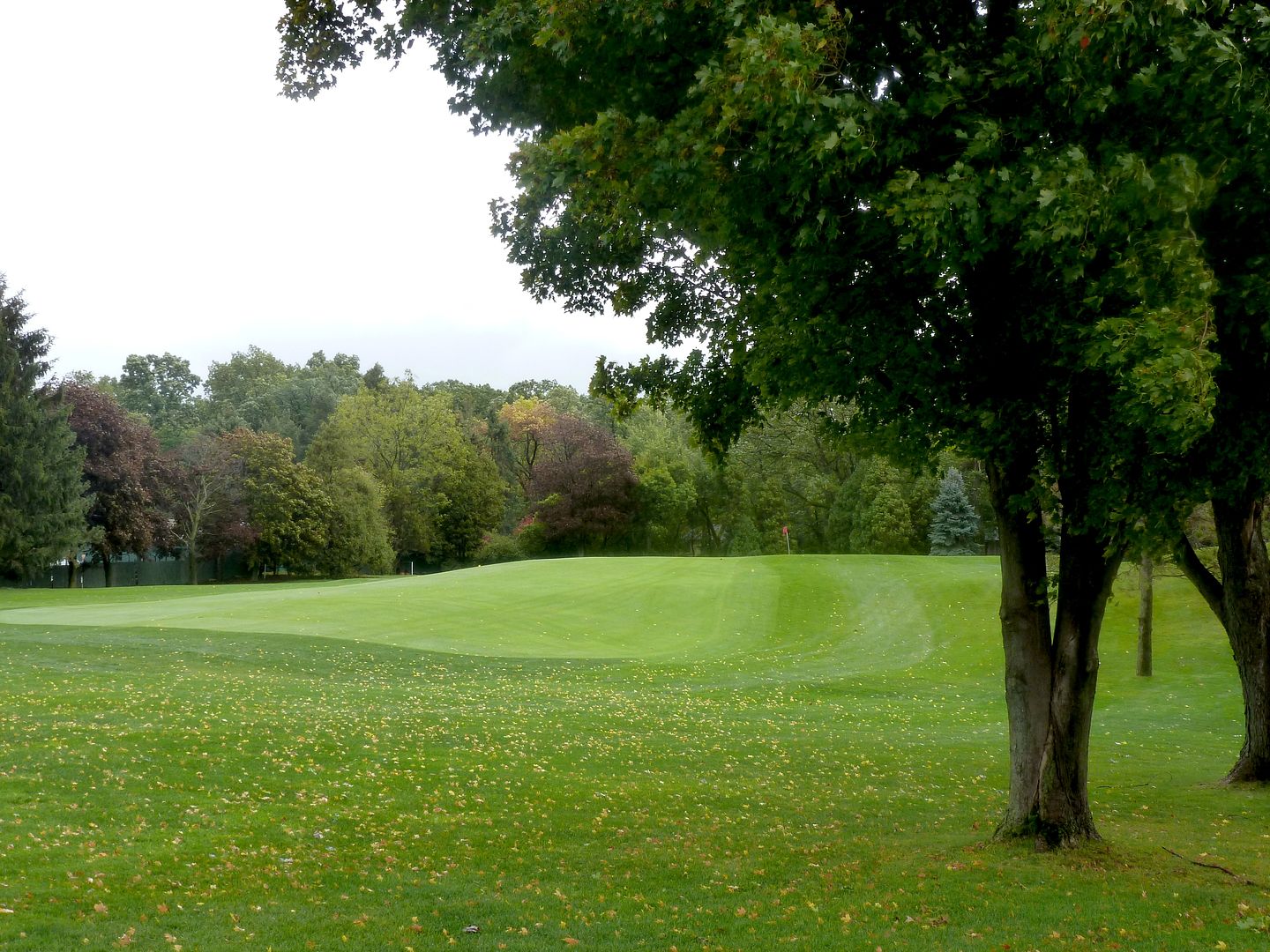
Golfers that succeed in judging the distance correctly will find a green and fairway cut that appear much larger than from the tee. There is very little movement on the 3rd green, with the green tilting from right-to-left. The back-left pin position would be very difficult, giving the appearance of a pin floating in rough/bunker, not even on the green.

